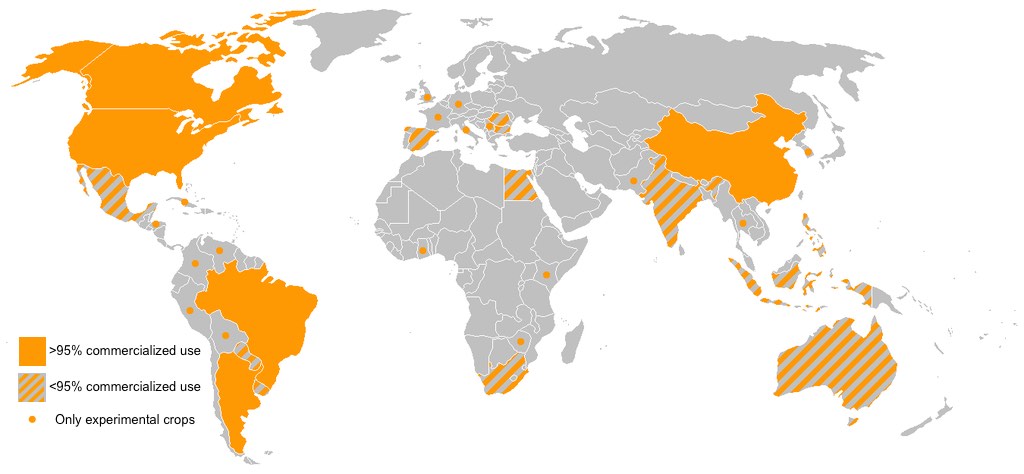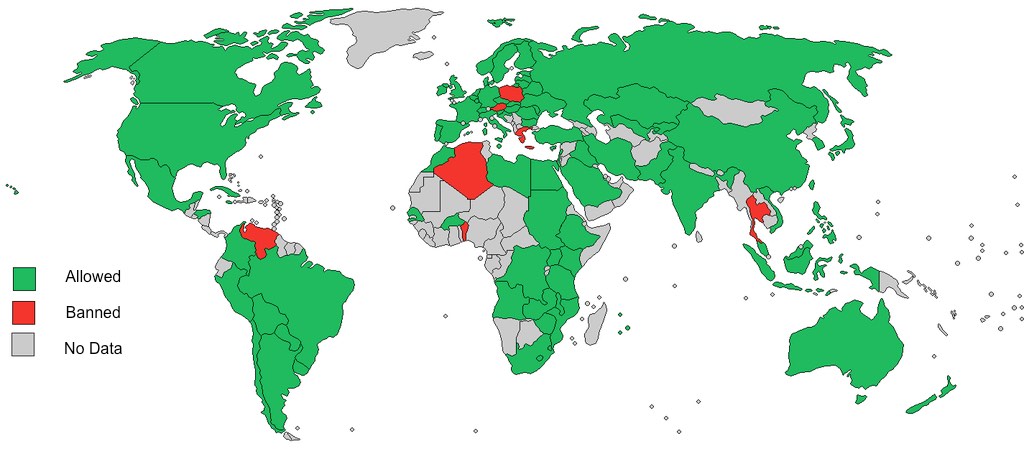Climate Change
1.4 Hawaii Votes – Yes or No to G.M.O.s?
Alyssa Marie Jones
In 2013, Hawaii passed a bill banning the use of genetically modified organisms (GMOs). However, research on GMOs is inconclusive. Do GMOs put Hawaiians at risk of adverse health effects? What does the passage of a GMO ban in Hawaii signify for the future of food production in the United States?
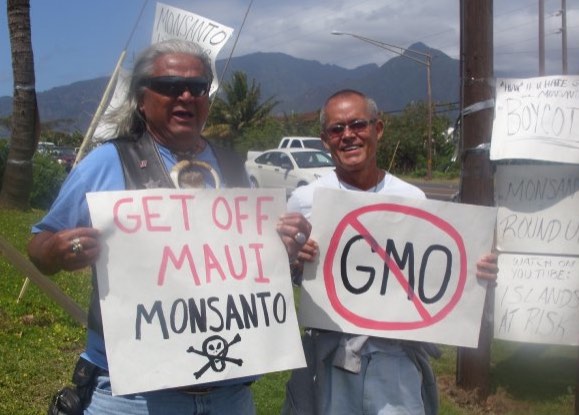
Photograph by Alexis Baden-Mayer, 2010. CC BY 2.0.
The controversial debate regarding the role of genetically modified organisms (GMOs) in Hawaii has ended. A bill to ban GMOs was introduced in May, 2013 by Margaret Wille, the chairwoman of the Council’s Agricultural Committee of Hawaii. This ban was originally proposed to the nine-member Hawaii County Council.1 The bill bans growing any genetically engineered crop on the island, with the exception of the two already grown there: corn and papaya. Field tests to study new GMOs are also be banned and violations result in fines as high as $1,000 per day.
GMOs continue to be heavily debated throughout the United States. In response to a warming world and a growing global population, the food industry is under pressure to grow healthy food more efficiently. As a result, several companies have started using GMOs. The use of GMOs has led to increasing concerns among the public. According to a poll conducted by the New York Times, 3 out of 4 Americans surveyed are concerned about the health risks associated with GMOs in their food.1 Approximately 20 states have proposed bills that would require food that contains GMOs to be labeled.1 For instance, Whole Foods Markets, a national grocery store chain, has stated that it will label or replace foods that contain GMOs by 2018.1
- Figure 2a. While many countries are taking a precautionary approach to GMO’s, only planting experimental crops, other countries, like the United States, have embraced GMO production. Data as of 2005.Map by Pixeltoo, 2005. Public Domain.
- Figure 2b. Laws regarding GMO production are diverse. Green indicates that some form of GMO use is allowed. Red indicates that the country has fully prohibited the use of GMO’s or GMOs can only be used for scientific purposes. Map by Zhitelew, 2009. Public Domain.
GMOs have been commercially grown for the past two decades. In 2010, approximately 10% of crops planted worldwide were GMOs. Thirty countries are growing GMOs, while increasingly more countries are performing field trials. The four primary types of GMOs are soybean, maize, cotton, and rapeseed. GMOs are usually handled under high scrutiny.2 In the European Union (E.U.), goods and feed containing as little as 0.9% modification must be labeled as a GMO. Food is tested by Polymerase Chain Reaction (PCR) to determine which contain GMOs and then it is labeled accordingly.3 The E.U. has a zero-tolerance policy in which non-authorized GMOs cannot be placed on the market.4 In the United States, there is no standard for labeling GMOs. However, there is an organization called the Non-GMO Project, which tests individual ingredients for GMOs by using a third party testing facility. Many GMO-free foods display the Non-GMO Project verified seal on their label.5
In 1998, the papaya was among the first genetically modified (GM) fruits to be approved by the Food and Drug Administration (FDA). It was created in response to the papaya ringspot virus (PRSV) that was infecting and ultimately destroying papaya production6 (Figure 3). The papaya ringspot virus would have decimated papaya production worldwide were it not for scientific engineering. The GM papaya serves as the impetus for further GMOs (Figure 4). As of 2012, the FDA has approved over 40 seeds and plants for genetic modification.7
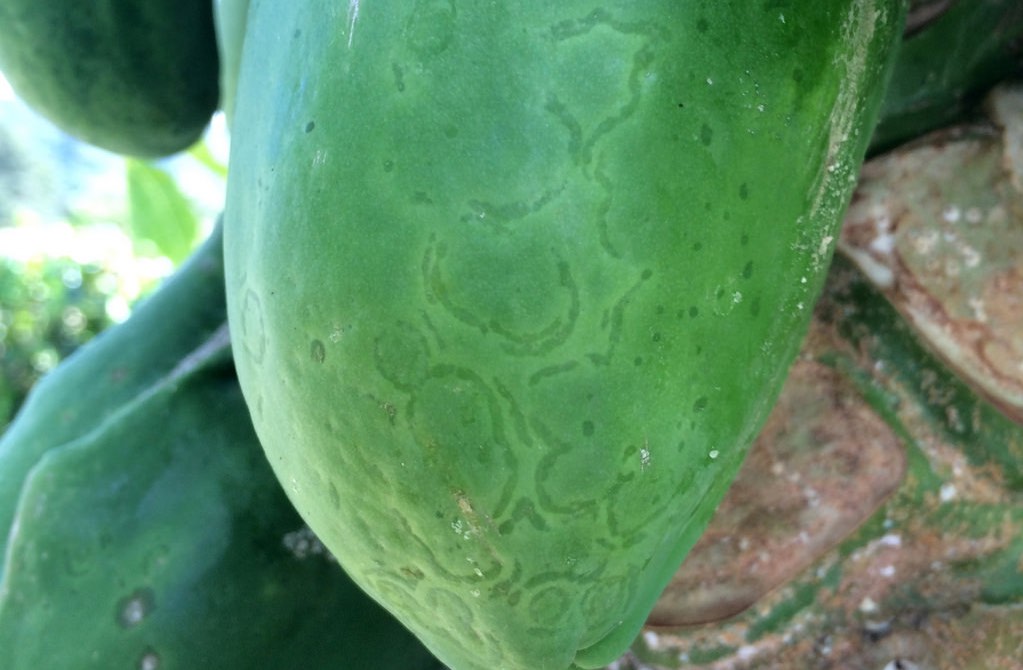
Photograph by Scot Nelson, 2014. CC BY 2.0.
The focus of the GMO debate in Hawaii involves the people’s desire to live in a GMO free state, versus the aspirations of farmers to grow virus free crops. Distrust of GMO seed-producing companies like Monsanto helped inspire the bill. The people of Hawaii are worried that their island will be overtaken by large agricultural companies, in which profit is often valued more than sustainability and public safety. Hawaiian residents have the added challenge of deciding what to believe regarding information on GMOs. Stories of mice developing tumors after consuming GM corn have been publicized, although one week later, scientists denounced these articles as false. Butterflies were also rumored to be disappearing due to GMOs. However, it was discovered that butterfly disappearances were not directly caused GMOs, but by the herbicides used in conjunction with the GMOs.1 These accounts of GMOs causing harm in organisms have damaged the public image of the product.
Hawaiian farmers are concerned that the ban will create a negative perception of GMOs and their crop sales will decline. Supporting farmers’ concerns is Dr. Suzie, who suggests that humans have bred crops of the same species to produce desired traits for millenniums. Through technological advances it has become possible to borrow features not found within a crop family and input these features within an organism.1 For example, rice can be modified to have vitamin A. This type of rice is called Golden Rice, and is used to aid the world’s poor populations, which are often deficient in this crucial vitamin. The scientists that created Golden Rice argue that GMOs have had an exemplary safety record since their introduction into commercial production over 17 years ago. These scientists believe that GMOs benefit farmers, the environment, and consumers. GM crops have been adopted faster than any other agricultural advance in humanity’s history.8
In attempt to address the prevailing uncertainty with GMOs, scientists have conducted various research projects. Six thousand five hundred (6500) members of the Ecological Society of America conducted research on GMOs. Results suggest that assessing the ecological risk of GMOs is complex because many factors are involved. Such factors include the organism that is being modified, the engineered gene, and the environment in which the organism will be placed. Due to these factors, GMOs need to be carefully handled and monitored. The scientists also cautioned that GMOs will be less fit than their parents and that natural selection would act on GMOs as it does with other organisms. If a GMO does not perform as intended or malfunctions, it will take many generations for the GMO to dissipate from the environment. GMOs will not fully replace their predecessors and the scientists express that utmost carefulness must be exercised with these organisms.9
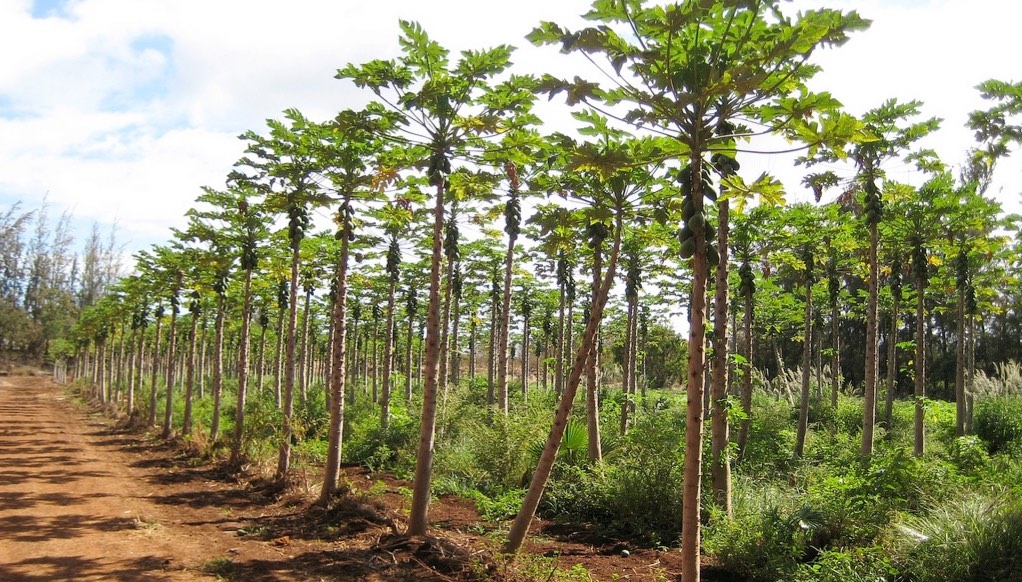
Photograph by J. Shyun, 2010. CC BY-NC-ND 2.0.
Following the cautionary advice of the Ecological Society of America, Hawaii has implemented a ban on GMOs. The bill was signed December 5th, 2013 postponing the use of GMOs in Hawaii.1 It remains uncertain how the rest of the United States will respond to GMOs. Debate over GMOs will likely continue and further research is needed to determine the short and long term effects of these manufactured organisms.
References
- Harmon, Amy (2014 January 5). A Lonely Quest for Facts on Genetically Modified Crops. The New York Times, pp A1.
- Holst-Jensen, A., et al. (2012). Detecting un-authorized genetically modified organisms (GMOs) and derived materials. Elsevier: Biotechnology Advances, 30:1318-1335.
- Holst-Jensen, A., et al. (2002). PCR technology for screening and quantification of genetically modified organisms (GMOs). Analytical and Bioanalytical Chemistry, 375:985-993.
- Guertler, P. et al. (2012). Development of a CTAB buffer-based automated gDNA extraction method for the surveillance of GMO in seed, European Food Research and Technology, 236:599-606.
- Novak, Sara. (2012). Why is America One of the Only Industrialized Nations With No GMO Labeling? TLC Retrieved from http://recipes.howstuffworks.com/why-is-america-one-of-the-only-industrialized-nations-with-no-gmo-labeling1.htm
- Lin, H.T., et al. (2013). Toxicity Assessment of Transgenic Papaya Ringspot Virus of 823-2210 Line Papaya Fruits, Journal of Agricultural and Food Chemistry, 61:1585-1596.
- Hennessey, Rachel. (2012, November 03). GMO Food Debate In The National Spotlight. Forbes. Retrieved from http://www.forbes.com/sites/rachelhennessey/2012/11/03/gmo-food-debate-in-the-national-spotlight/2/.
- Alberts, B., et al., (2013). Standing up for GMOs. Science, 341:1320.
- Tiedje, J.M., et al., (1989). The Planned Introduction of Genetically Engineered Organisms: Ecological Considerations and Recommendations, Ecology, 70:298-315.
- Baden-Mayer, Alexis. (2010). [Photograph of protesters against GMOs in Hawaii]. Retrieved from FlickrCommons. CC BY 2.0.
- Pixeltoo. (2005). World GMO production. [Diagram] Retrieved from Wikimedia Commons. Public Domain.
- Zhitelew. (2009). Laws regarding GM food. [Diagram]. Retrieved from Wikimedia Commons. Public Domain.
- Nelson, Scot. (2014). [Photograph of papaya with ringspot virus (PRSV)]. Retrieved from FlickrCommons. CC BY 2.0.
- Jshyun. (2010). [Photograph of Papaya trees on Kuma Farms in Hawaii]. Retrieved from FlickrCommons. CC BY-NC-ND 2.0.
